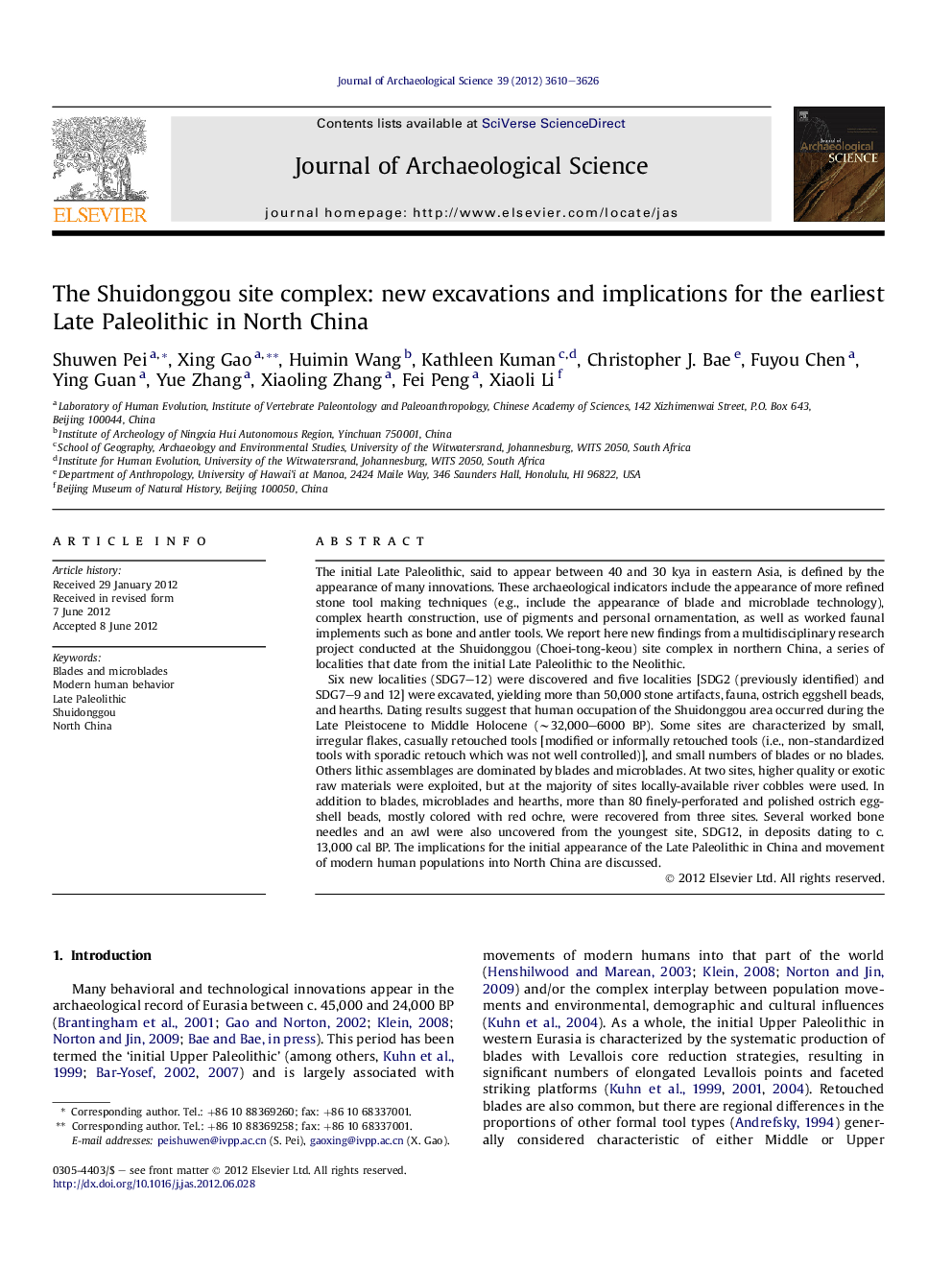| کد مقاله | کد نشریه | سال انتشار | مقاله انگلیسی | نسخه تمام متن |
|---|---|---|---|---|
| 1035653 | 943861 | 2012 | 17 صفحه PDF | دانلود رایگان |

The initial Late Paleolithic, said to appear between 40 and 30 kya in eastern Asia, is defined by the appearance of many innovations. These archaeological indicators include the appearance of more refined stone tool making techniques (e.g., include the appearance of blade and microblade technology), complex hearth construction, use of pigments and personal ornamentation, as well as worked faunal implements such as bone and antler tools. We report here new findings from a multidisciplinary research project conducted at the Shuidonggou (Choei-tong-keou) site complex in northern China, a series of localities that date from the initial Late Paleolithic to the Neolithic.Six new localities (SDG7–12) were discovered and five localities [SDG2 (previously identified) and SDG7–9 and 12] were excavated, yielding more than 50,000 stone artifacts, fauna, ostrich eggshell beads, and hearths. Dating results suggest that human occupation of the Shuidonggou area occurred during the Late Pleistocene to Middle Holocene (∼32,000–6000 BP). Some sites are characterized by small, irregular flakes, casually retouched tools [modified or informally retouched tools (i.e., non-standardized tools with sporadic retouch which was not well controlled)], and small numbers of blades or no blades. Others lithic assemblages are dominated by blades and microblades. At two sites, higher quality or exotic raw materials were exploited, but at the majority of sites locally-available river cobbles were used. In addition to blades, microblades and hearths, more than 80 finely-perforated and polished ostrich egg-shell beads, mostly colored with red ochre, were recovered from three sites. Several worked bone needles and an awl were also uncovered from the youngest site, SDG12, in deposits dating to c. 13,000 cal BP. The implications for the initial appearance of the Late Paleolithic in China and movement of modern human populations into North China are discussed.
► Shuidonggou site plays an important role for understanding the Initial Late Paleolithic in northern China.
► Five localities were excavated, yielding more than 50,000 stone artifacts, ostrich eggshell beads, etc.
► Dating results suggest that human occupation occurred during ∼32,000–6000 BP.
► More than 80 finely-perforated and polished ostrich egg-shell beads were recovered from three sites.
► Several worked bone needles and an awl were uncovered from the site, SDG12, c. 13,000 BP.
Journal: Journal of Archaeological Science - Volume 39, Issue 12, December 2012, Pages 3610–3626